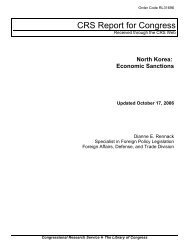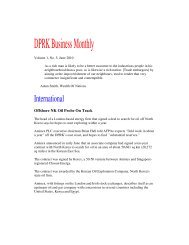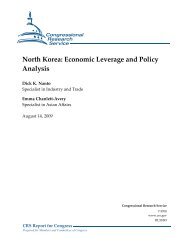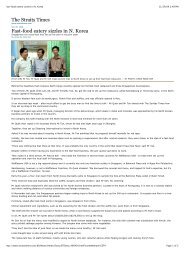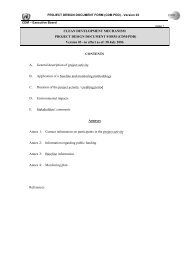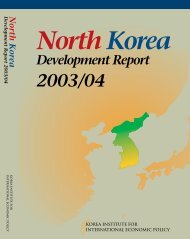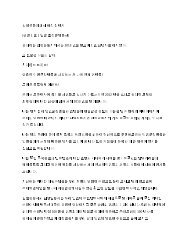North Korean Policy Elites - Defense Technical Information Center
North Korean Policy Elites - Defense Technical Information Center
North Korean Policy Elites - Defense Technical Information Center
Create successful ePaper yourself
Turn your PDF publications into a flip-book with our unique Google optimized e-Paper software.
Bulgarian Trade Unions, after which he went into coma. 5 Two days later, on a rainy Saturday<br />
morning, Kim Jong Il hurriedly invited the Soviet Ambassador Nikolay M. Shubnikov to his<br />
marbled and gilded office on the party street in downtown Pyongyang. Visibly traumatized, the<br />
Dear Leader came out in person to greet the Ambassador, firmly shook his hand and, without<br />
beating about the bush, informed the Soviet envoy via a <strong>Korean</strong> interpreter that “the Great<br />
Leader was passing away from us,” and that the “Politburo decided to revive him for us.” He<br />
said that “the catastrophe occurred two days before, and we badly need urgent medical assistance<br />
from Soviet cardiologists.” Then, he described in detail what had actually happened to Kim Il<br />
Sung and how <strong>Korean</strong> doctors attempted to revive him. What was surprising was the level of<br />
detail and Kim Jong Il’s almost professional knowledge of all related medical terms and<br />
processes. Kim Jong Il went on to say that the DPRK government would not spare any resources<br />
and expenditures in order to save the Great Leader. At the end of the conversation, he shook the<br />
Ambassador’s hand, warned him that, besides the two of them, only five other people from the<br />
inner circle of the supreme <strong>North</strong> <strong>Korean</strong> party and military leadership and Kim Il Sung’s three<br />
personal doctors were privy to that information, and admonished him to safeguard the state<br />
secret in earnest.<br />
Upon his return to the Soviet Embassy, Ambassador Shubnikov composed a ciphered<br />
telegram addressed only to Mikhail Gorbachev, burnt the hand-written minutes of the<br />
conversation, and personally dispatched it to Moscow. Just twelve hours later, an emergency<br />
aircraft carrying fifteen leading Soviet cardiologists arrived at Pyongyang. The Soviet heart<br />
specialists were immediately transported by helicopter from the Sunan International Airport to<br />
Myohyangsan, where Kim Il Sung’s comatose body was lying at one of his magnificent secluded<br />
residences. It took a total of forty-eight hours for these extraordinary medical miracle workers to<br />
bring Kim Il Sung back to life. They continued to monitor Kim Il Sung’s health progress until his<br />
full recovery in the following month. In other words, Kim Jong Il’s decisive action saved his<br />
father’s life and cemented the dictator’s trust in his son’s judgment and confidence in his filial<br />
piety.<br />
But, on July 8, 1994, Kim Jong Il chose to move on. He launched a new era in <strong>Korean</strong><br />
history when the court doctors were ordered to cease their efforts to maintain the 82-year old<br />
Great Leader’s life. During the ensuing neo-traditional three-year mourning period, key decisionmaking<br />
processes allegedly became more “informalized” and “privatized” by Kim Jong Il and<br />
his 13 to 15 closest family members and staff aides. Organizationally, the party grip on the<br />
formulation of domestic economic policy, national security and defense strategy, and foreign<br />
5 The following account is based on the author’s conversation with one of the Russian participants of the described<br />
events who asked not to be identified.<br />
IV-9



